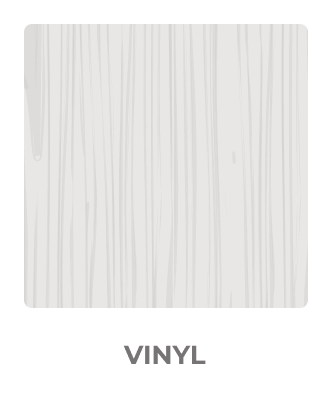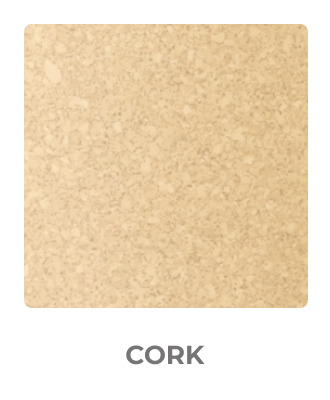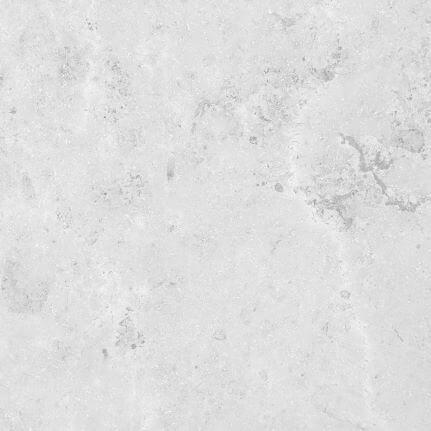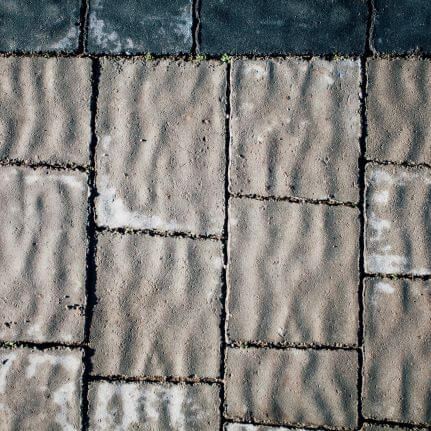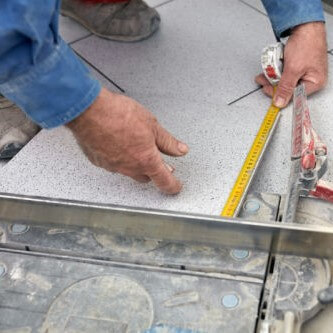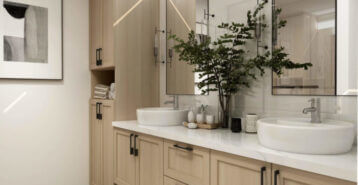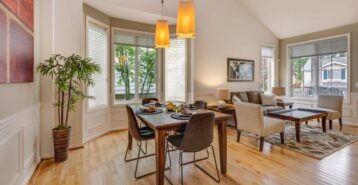Are you doing a flooring project?
Modernize can pair you with three to four pros in your area, so you can compare options and save time and money.
If you are aging in place, have young kids at home who are not quite steady on their feet, or are otherwise at a greater risk of falling, then investing in non-slip flooring can improve your life at home. Whether you need non-slip flooring in places that are known to collect spills and humidity, like the bathroom, or throughout your whole home, you’ll find there are a wide range of flooring options that meet your needs—and your budget.
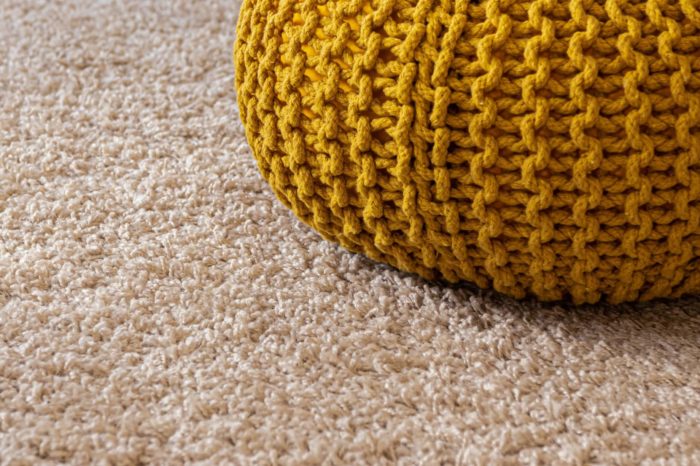
What is Non-Slip Flooring?
Six out of 10 falls happen at home according to the National Institute on Aging. Non-slip flooring options for the home are textured, provide traction, or come in large pieces to avoid tripping. Even some flooring that is typically quite smooth and slippery can sometimes be made in a non-slip alternative, so whatever flooring you are most attracted to, it is worth researching what options are available to you.
What is the Best Non-Slip Flooring?
Different rooms of the house will need different flooring options. Here are some top choices for non-slip flooring:
Non-Slip Flooring for Living Areas and Bedrooms
This is where you spend the majority of your time. With so much living happening on these floors, and especially if you are aging in place in your home, check out some of these popular non-slip options.
Vinyl
Not only is this material great for traction, but it’s one of the most affordable options out there. And don’t think of gaudy ‘70s vinyl when you think of this for your flooring — vinyl is versatile and now comes in a variety of different prints to match the higher-end (and slippery!) flooring you might desire, like marble or wood. Vinyl is also moisture-resistant, so if you love the look of it, you can even extend it into your bathrooms and kitchen. Vinyl comes in two forms: planks and sheets. Since the goal of vinyl is to mimic the look of wood and other materials, planks are preferred for that look. However, sheets are cheaper since they can be mass produced.
Best for: Throughout the home, as well as the bathroom and laundry room since it can hold up to spills.
How to install: Vinyl can be installed overtop practically any flat surface. For planks, pieces “click” together or there is also the peel-and-stick variety. Vinyl is fairly easy to install on your own, but there will be trial and error to make sure everything looks smooth and even.
Cork
For main rooms that aren’t exposed to a lot of moisture, such as the living and dining rooms, cork is an excellent choice, especially for people who are aging in place. Cork is not only non-slip, but it is also soft underfoot, blocks out a lot of sound, and is an eco-friendly material that biodegrades. However, it can be easily damaged and is not suitable for homes with pets whose paws can break down the flooring.
Best for: Homes in colder climates benefit from cork floors, as they keep warm. Bedrooms and areas with a lot of traffic are great options for cork because of its soundproof nature.
How to install: Cork tiles are installed with adhesive and are not considered a beginner’s project. The adhesive is very strong and there’s very little room for error; this might be a project better suited for an experienced contractor.
Carpet
If you want flooring that is not at all prone to becoming slippery and provides a soft, comfortable feel underfoot, then carpet may be the perfect solution. Like cork, it is also sound-dampening. Since carpet is especially soft and comfortable, it is a great choice for bedrooms. Carpet should not be installed in any areas where spills and leaks are more likely, like the bathroom, kitchen, or laundry room.
Best for: Bedrooms, main living areas, play rooms, and other areas without a lot of moisture.
How to install: Carpet requires a pad be installed underneath. Both the pad and the carpet are quick to install; it can typically be completed in a few hours to a day depending on the amount of square footage you are covering.
Non-Slip Flooring for Bathrooms and Showers
Since bathrooms and showers see the most water in your home, it is especially important to ensure the flooring here is non-slip. You will also want to make sure that your shower floor has non-slip flooring. If you find that even a textured shower floor is not enough to prevent slips, you may want to consider a walk-in tub, which comes standard with a non-slip floor and seat.
Here are some great options for non-slipping flooring for bathrooms and other moisture-prone areas.
Find the Right Contractor for Your Flooring Project
Whether you’re ready to begin your project now or need some expert advice, our network of contractors are here to help. With a few simple questions, we’ll find the best local professionals for you
Porcelain and Ceramic Tile
The most traditional choices for flooring in these areas are porcelain and ceramic tile. The two are made very similarly and are both tough, withstand moisture, and are easy to clean. However, they are also smooth surfaces that can become quite slick when wet. If you like the benefits of these tiles, then be sure to look for non-slip varieties. These will be specifically marketed as being non-slip and they have a textured surface to reduce your chance of a fall.
Best for: Throughout the home, but especially for bathrooms, laundry rooms and other places that are exposed to a lot of water and humidity.
How to install: Porcelain and ceramic tile is installed by laying down mortar and placing the tile on top of it. Grout is also laid over it. For corners and edges, tile will have to be cut to fit properly. While DIYers might be comfortable taking on a small area, for large rooms, it’s best to call a contractor to make sure that it’s done properly. Tiling that is installed incorrectly will have a shorter lifespan and is prone to cracks.
Natural Stone
On the higher end of the price spectrum is natural stone, which is beautiful as well as slip-resistant thanks to its texture. However, it’s a very pricy installation option and also requires sealant to be installed on a regular basis, so for some, this is too high-maintenance of a non-slip flooring option.
Best for: This is a popular option for bathroom walls and floors as well as for shower floors.
How to install: There are many layers to installing natural stone floors, with two layers of membrane separated by thinset before finally laying down the tile. Because this is a natural material, each tile is not going to be perfectly uniform, making it especially important to take your time. Like porcelain and ceramic tile, grout is laid over it as well.
Non-Slip Flooring for Outdoors
From errant water from the hose to rain and snow, the areas right outside your home can also be quite prone to getting slippery. Here are some options for non-slip outdoor tile and decking.
Patio Pavers
Whether you are installing a new patio or want to lay something over your existing patio, patio pavers are a good option. If you are installing a new patio, you can choose pavers in stone, brick, and many other materials. Some paver materials are naturally non-slip due to their textured surface, and some can be coated with a non-slip spray. If you have an existing patio you don’t want to rip up, interlocking elastic or rubber pavers can be laid on top of it to give you a non-slip surface.
Best for: Backyards and front steps/front entries. Rubber or elastic pavers can even be laid in a path from your car or garage to your front door or around any areas in the backyard that you need extra grip on.
How to Install: New patios using stone, brick, and other more permanent pavers will likely need to be installed by a contractor who can ensure the material is not going to move after being laid, though an experienced DIYer may be able to tackle the job, too. Rubber or elastic pavers can be laid yourself if you feel up to the project by interlocking the pavers directly on top of slippery areas.
Outdoor Tile
Just like tile for indoors, non-slip outdoor tile can be made from (or resemble) stone and other natural materials. There is even non-slip outdoor tile made from porcelain. You can typically lay these large tiles in either small areas (like on top of grass or dirt) for a less slippery surface or place them more permanently, like installing them around the outside of a pool. If you are shopping for non-slip outdoor tile, look for something matte (typically, the shinier something is, the more slippery it is), and, as always, with a textured surface.
Best for: Any outdoor areas that most frequently get wet, like around a pool, an outdoor bar, or on top of slippery grass or dirt.
How to Install: These tiles are typically heavy, but if you are able to lift them, you can lay them on any solid, even, hard surface. If your surface is soft or uneven, then you may need extra help to get it level and ready. If you are installing outdoor tiles around a pool or somewhere else where it will be more permanent, you should call a contractor.
Other Tips for Preventing Slips and Falls
On top of installing non-slip flooring, there are other actions you can take as a homeowner to ensure that your home is safe:
- Remove trip hazards, such as wayward boxes, wires and cords, and paperwork.
- Open up tight spaces so that people have enough room to make turns and navigate between furniture.
- Store frequently used items at a level that is comfortable for family members to reach.
- Make sure that floorboards and carpeting are in good condition to avoid tripping.
- Purchase area rugs and bath mats that are non-slip with grips on the side that is placed on the ground.
- Consider buying rubber mats, stair treads, and anti-slip tape for any areas where you need extra grip or are worried about falling on.
- Ensure that your home is well-lit so family members can avoid tripping over items.
Find the Right Contractor for Your Flooring Project
Whether you’re ready to begin your project now or need some expert advice, our network of contractors are here to help. With a few simple questions, we’ll find the best local professionals for you
Reviews from Real Homeowners
Welcome to Homeowner Resources! We are the Modernize blog. Modernize pairs more than 3 million homeowners a year with pre-vetted contractors in their area. This blog started because we believe homeowners should know everything about their homes, from how their HVAC works to which front door colors they might love. On Homeowner Resources, you can find information on every part of your home, right down to how you can negotiate with contractors to get the best price. Here's more about the blog.
Need a contractor? Learn more about how Modernize finds the right pro for you.
